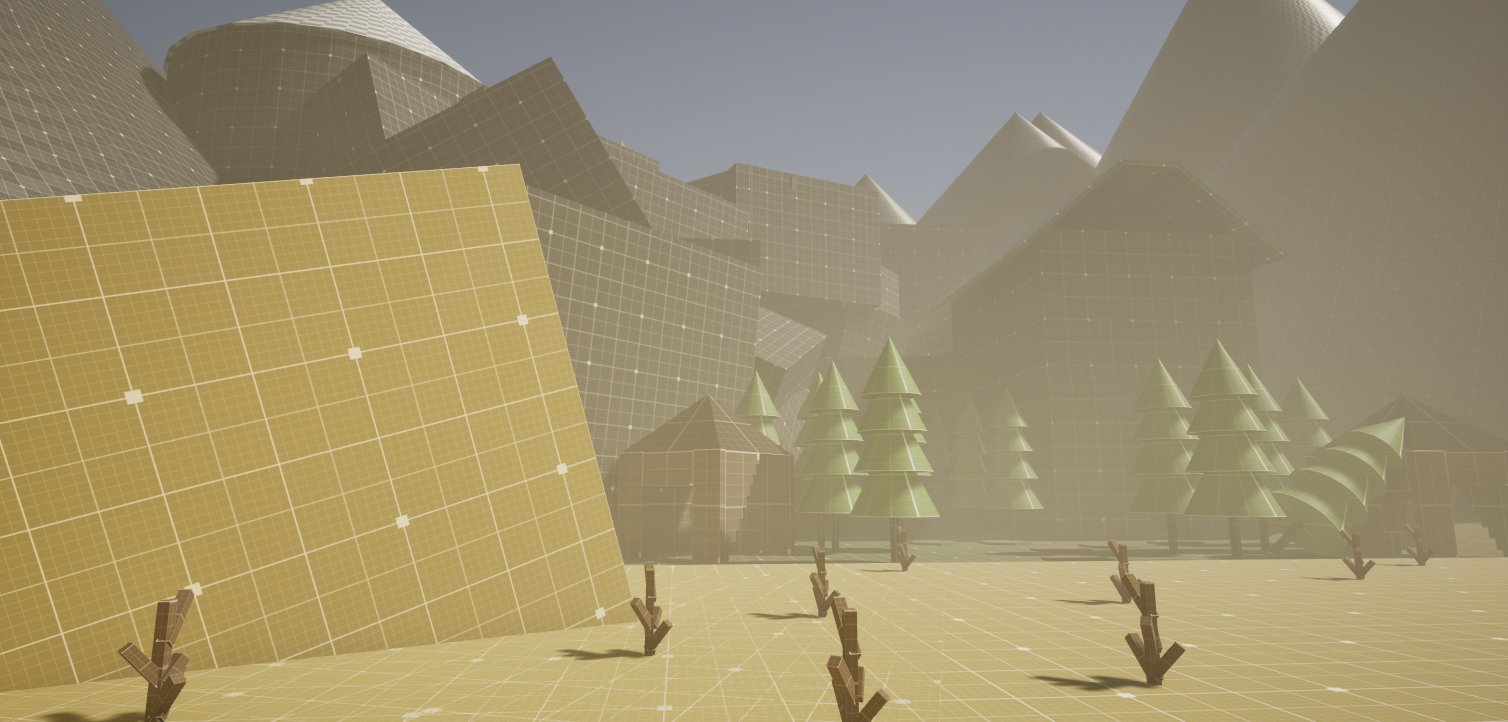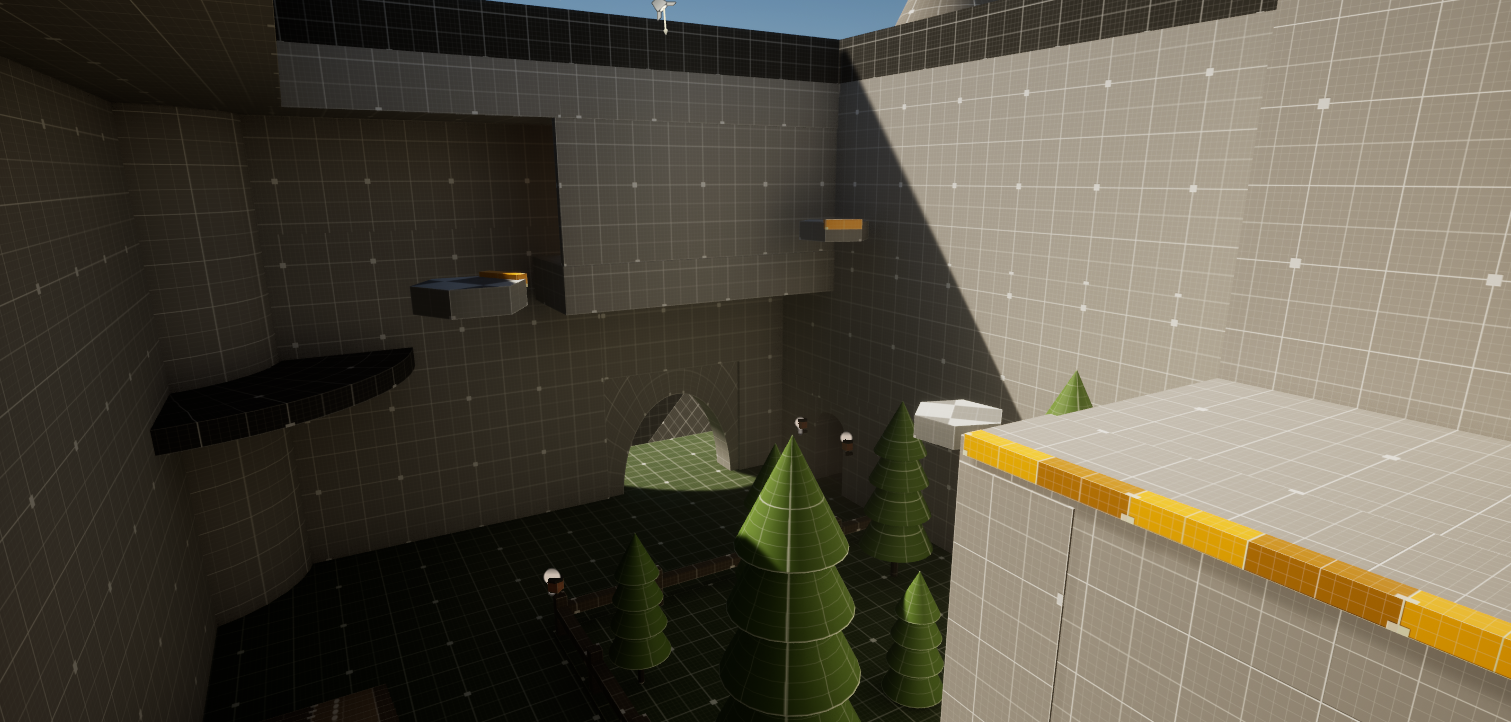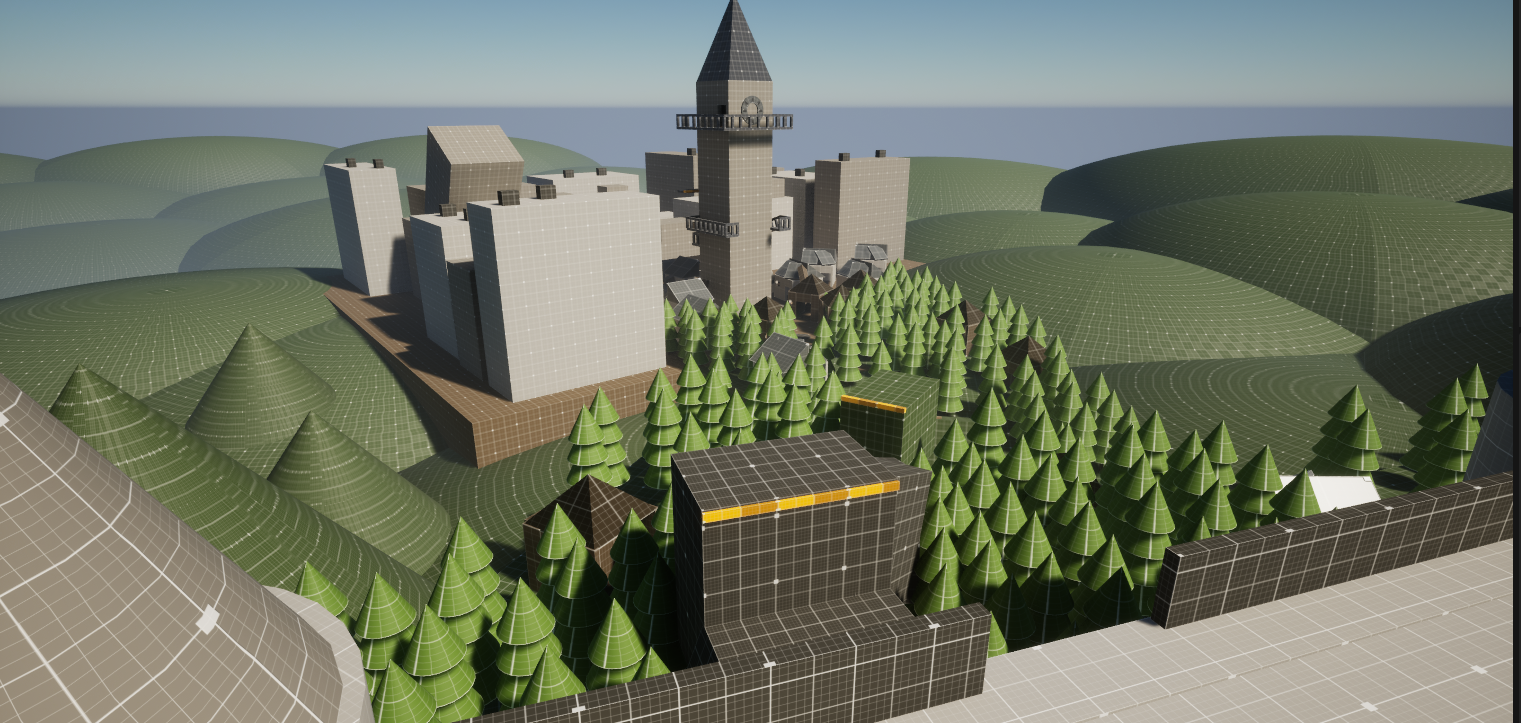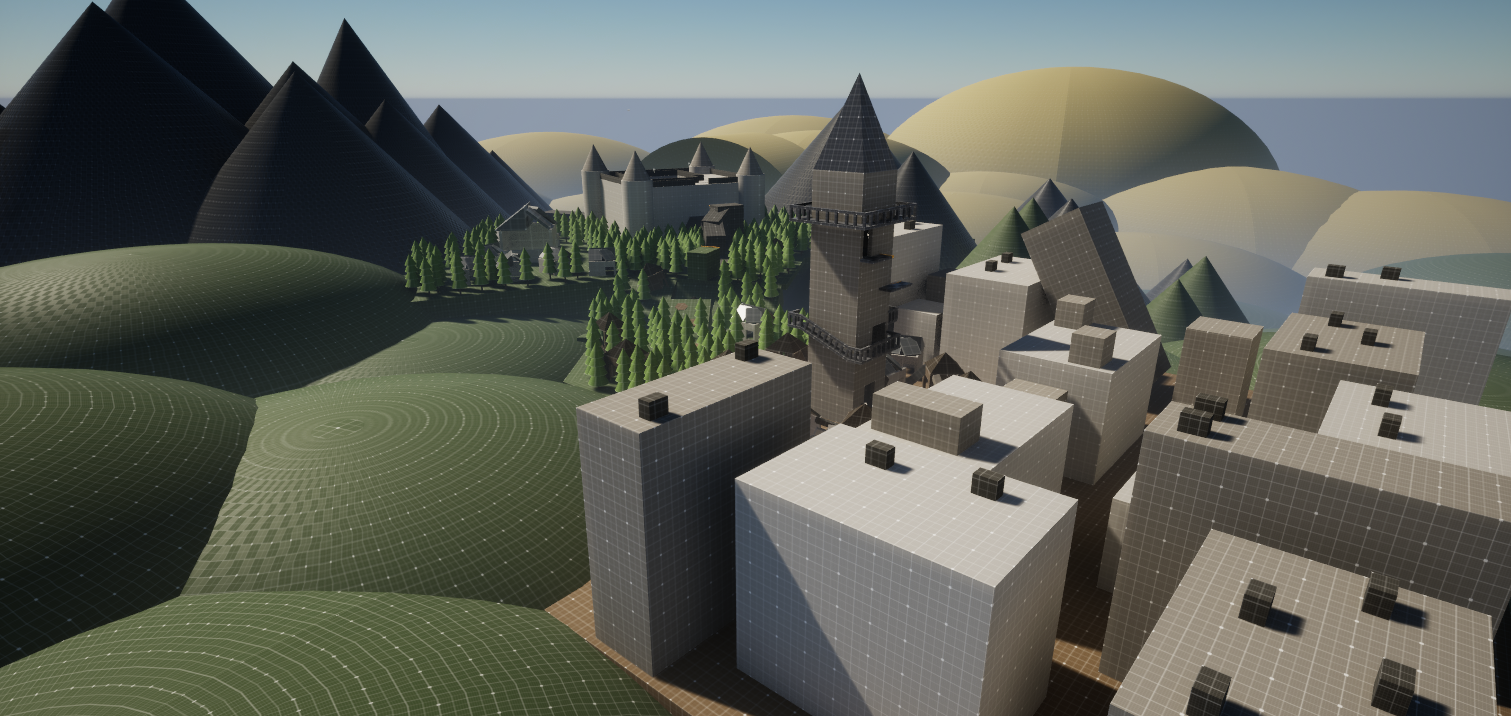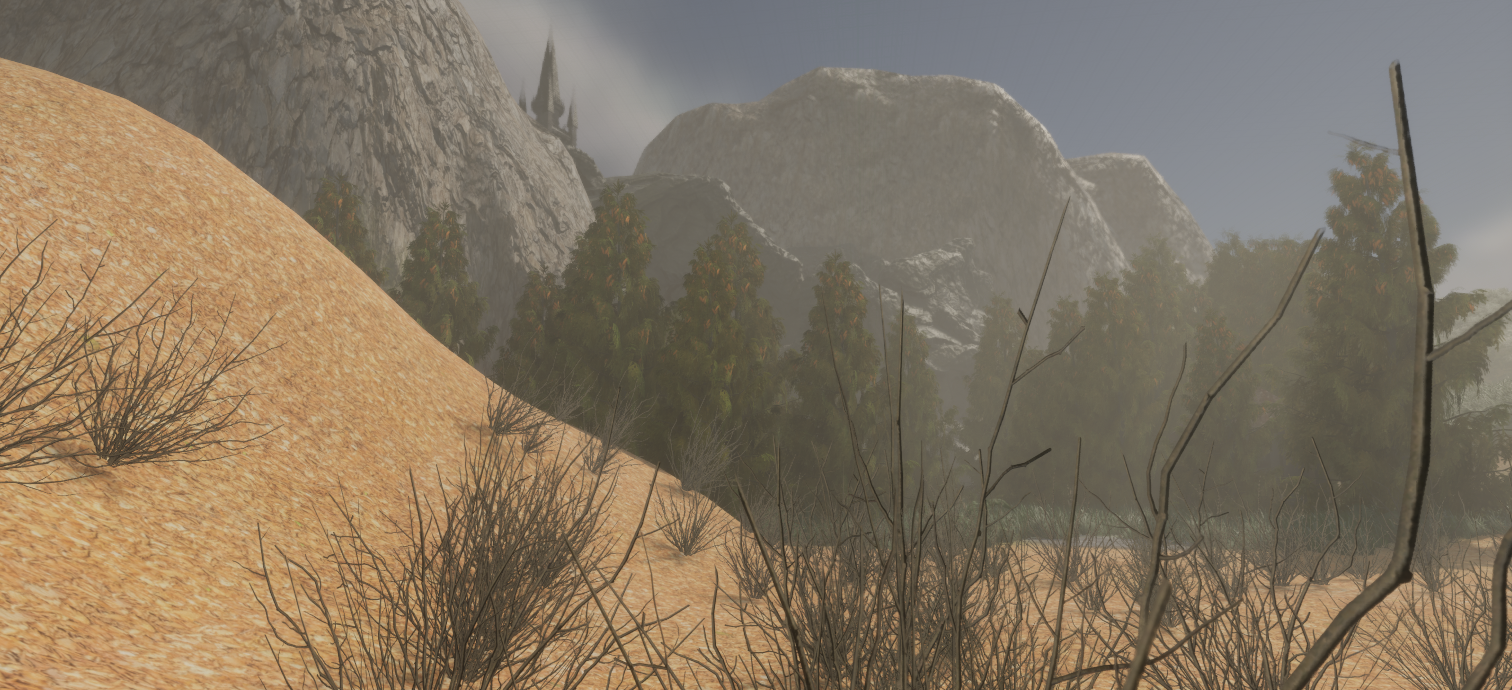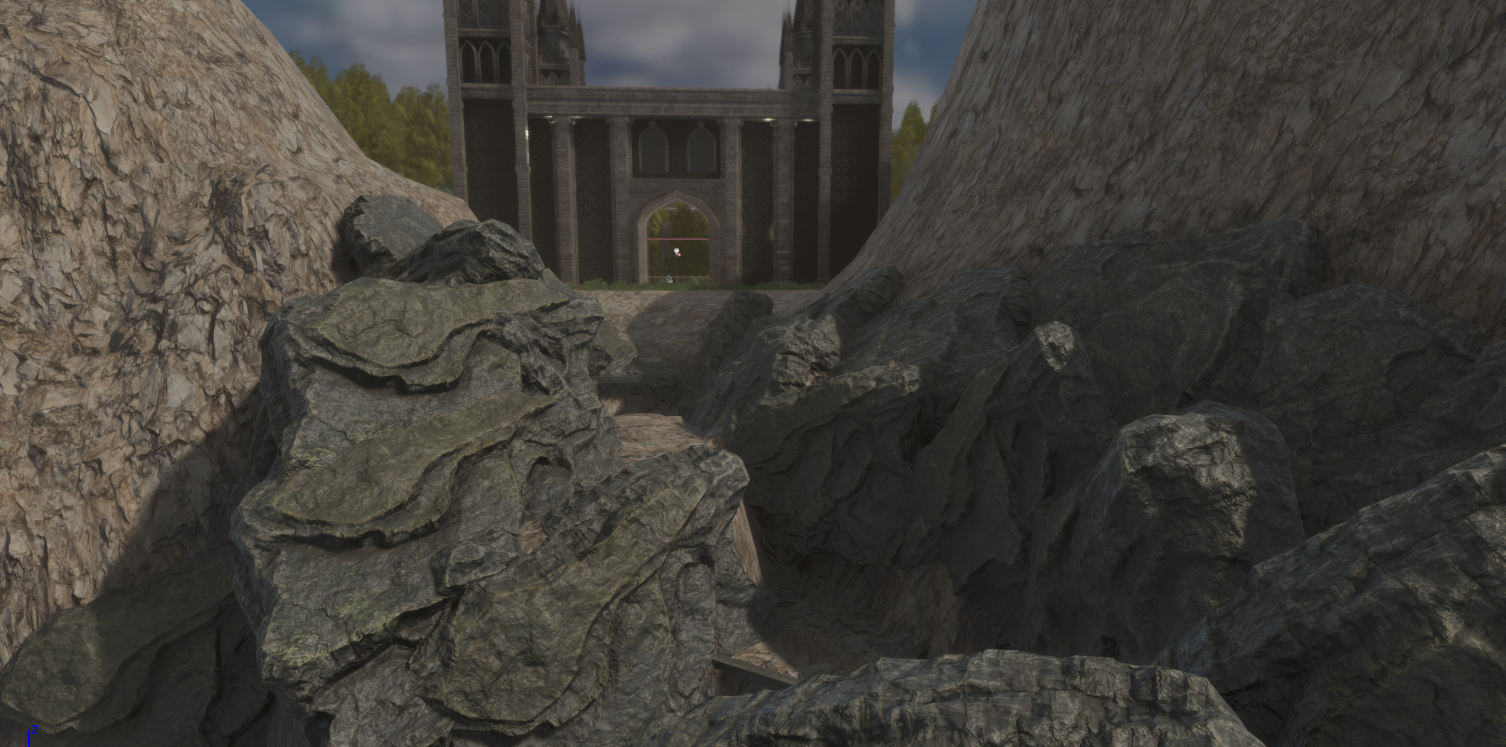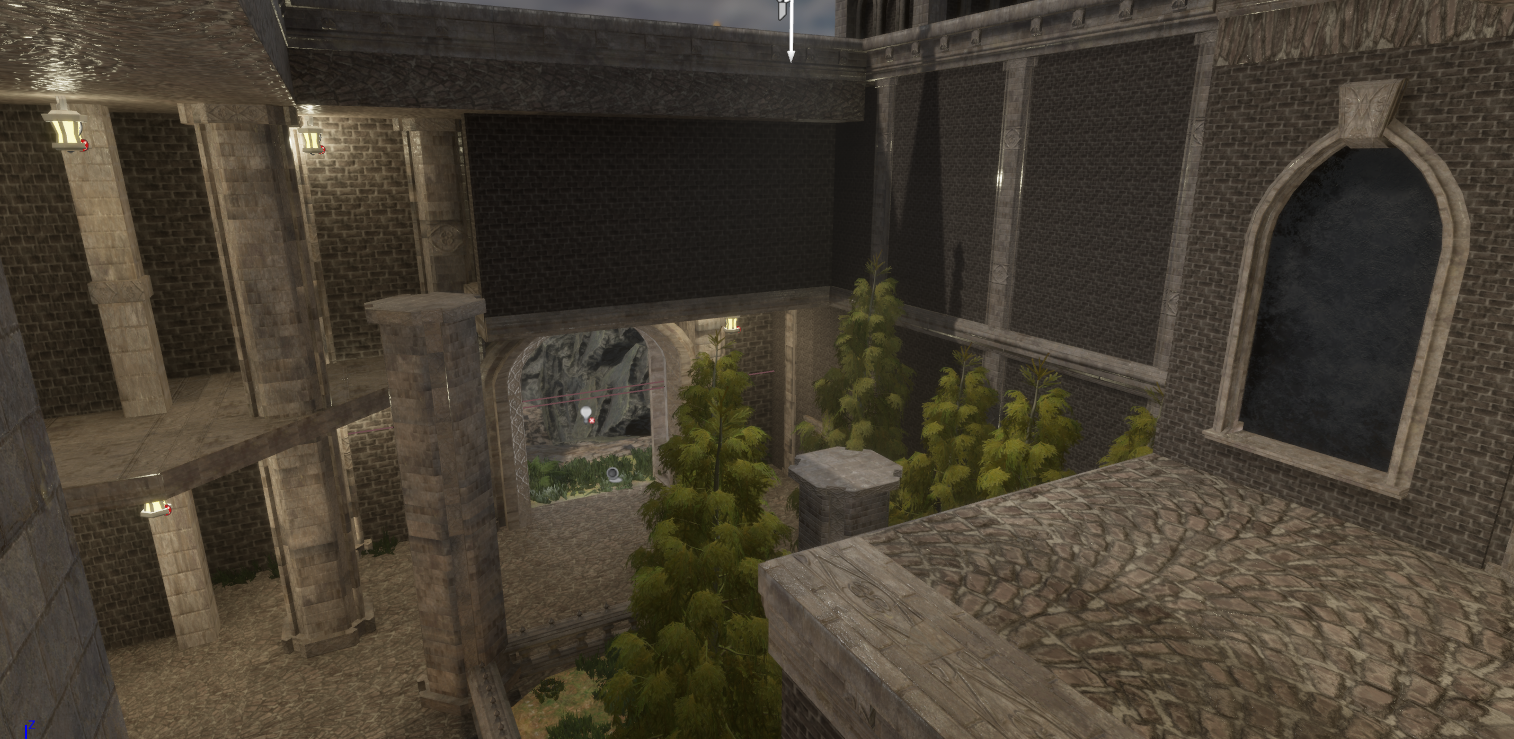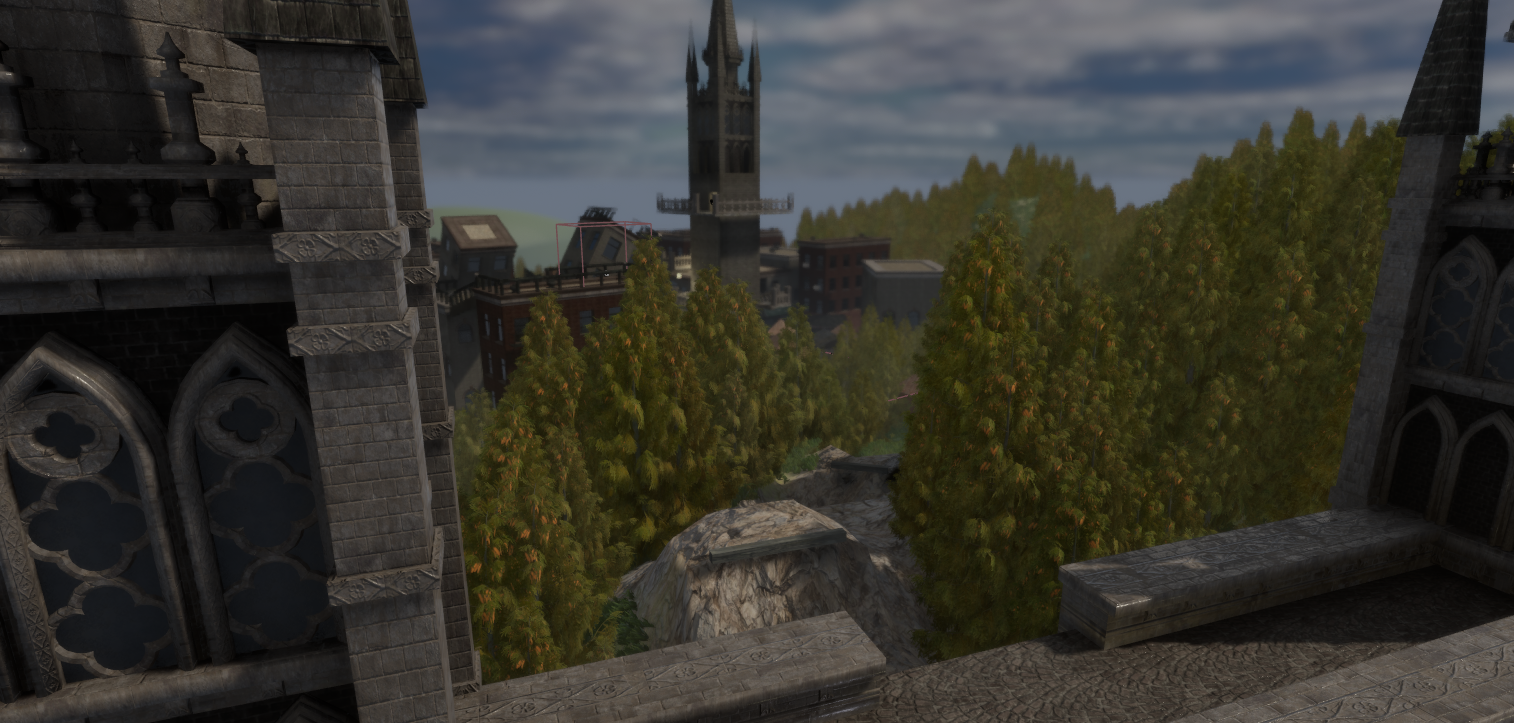Adventure Platformer Level
Overview
While studying at Full Sail University, I designed a 3D adventure platforming level focused on strong flow, environmental storytelling, and immersive scenery. My process began with a blockout to define the layout and platforming rhythm, followed by iterative testing to refine jump puzzles and navigation. The level is set in a medieval-inspired world, starting on a sandy beach and guiding the player up a mountain path through abandoned homes and crumbling structures. At the heart of the level lies a castle that serves as the main puzzle room. From there, the journey continues into a forgotten city, culminating at a towering clock bell structure. I aimed to create a space that felt both abandoned and alive, rich with overgrown vegetation, weathered architecture, and subtle narrative clues embedded in the environment.
Blockout
Opening Area
The level begins in a desolate, beachside environment designed to immediately establish tone and direction through environmental cues. Sand dunes, weathered huts, and scattered remnants of life such as dead bushes and dry foliage set the mood, conveying a once-inhabited world now long abandoned. From the spawn point, the player is presented with a clear view of the castle perched high in the mountain—a deliberate point of interest used to create visual intrigue and set a long-term goal. This initial vista, combined with carefully placed leading lines in the form of natural terrain and crumbling architecture, subtly guides the player toward the mountain path without the need for explicit instruction. As players move forward, the landscape begins to shift—trees begin to frame the path, continuing the visual guidance and organically drawing the player into the first transition zone as they ascend toward the castle.
First Transition Area
The first transition area tasks the player with ascending the mountain and begins to introduce more complex platforming mechanics. Players must navigate a series of natural ledges and deteriorating buildings, climbing upward through the remnants of once inhabited structures. These vertical spaces are designed to keep the flow engaging while maintaining a sense of environmental storytelling. Near the top of the mountain, the player is presented with a critical choice: attempt a direct but difficult jump across a wide waterfall fed gap to the castle entrance, or take a more exploratory route through a side cave. This cave, subtly lit with glowing crystals, offers an easier jumping puzzle that also rewards curiosity. Importantly, if the player attempts the challenging route and fails the jump, they are safely redirected into the cave below, allowing a graceful fallback without harsh punishment. This dual path design promotes player agency while ensuring the experience remains accessible and satisfying regardless of skill level.
The Castle
The castle serves as the centerpiece of the level and presents a vertical platforming challenge that doubles as a visual reward. Upon entering the castle courtyard, players are immediately presented with the main jumping puzzle, framed by stairs and ledges that guide them to the starting point. From there, they must leap across a series of crumbling stone pillars suspended above the courtyard, eventually reaching the castle’s interior and scaling a tall wall to access the rooftop. This elevated area offers a sweeping view of the terrain the player has already traversed, reinforcing their progress and teasing the final destination in the distance. However, for those inclined to explore, the castle’s main floor conceals an alternate route: a storage room tucked behind debris leads to a more accessible path to the second level. This alternative rewards curiosity and supports varied playstyles, allowing players to bypass the main challenge while still progressing toward the next major area.
Second Transition Area
The second transition area begins as the player descends from the rooftop of the castle, immediately greeted by a wide, scenic view of the sprawling city below and its central landmark, the towering clock bell structure. This visual goal anchors the player's direction as they make their way down the mountain. The descent is built around a series of platforming challenges, including carefully spaced jumps and ledge mantling, woven through a forested landscape that gradually reveals more remnants of civilization. Crumbled buildings and abandoned structures grow more frequent as the player nears the city, hinting at the scale of what lies ahead. A secret detour off the main path leads attentive players to a tucked-away house built into the hillside. Inside, they’ll find a hidden chest containing valuable items, another reward for those who take the time to explore. This section maintains forward momentum while building anticipation for the final, climactic area.
Main City/Clock Bell Tower
The final section of the level takes place within the ruined city, a completely abandoned urban space that contrasts with earlier environments through its haunting silence and dense decay. Crumbled buildings, dirt covered streets, and scattered debris reinforce the theme of desolation while maintaining a strong visual identity. Players are free to explore the city at their own pace, navigating between or through buildings using multiple clear paths subtly guided by leading lines. Areas not meant to be accessed are naturally blocked off by fallen structures, keeping exploration focused without breaking immersion. At the heart of the city stands the clock bell tower. An imposing final challenge and point of interest. Players must ascend the tower by jumping between internal ledges, eventually reaching an exterior walkway. From there, a final set of precision jumps leads to the top. Unlike earlier sections, failure during this climb results in falling to the tower’s base, requiring players to restart. By this stage, the increased difficulty serves as a test of everything the player has learned. Reaching the summit rewards them with a valuable loot chest and a breathtaking aerial view of the shattered city below and the mountain path they conquered to get there, a satisfying conclusion to the journey.
Completed Level
Bringing the level to life through final asset implementation was one of the most rewarding parts of the design process. I used Unreal Engine 5’s landscape tools to sculpt terrain and paint textures that made each area, from forest floors to rocky mountain paths, feel grounded and immersive. Modular assets were used to construct the buildings and castle, allowing for efficient iteration while maintaining a consistent visual style. Adding foliage like trees, bushes, and scattered debris helped convey a sense of natural overgrowth and abandonment. This stage transformed the blockout into a believable, lived in world, and I found a lot of joy in refining every detail to ensure the environment felt both immersive and visually compelling.

